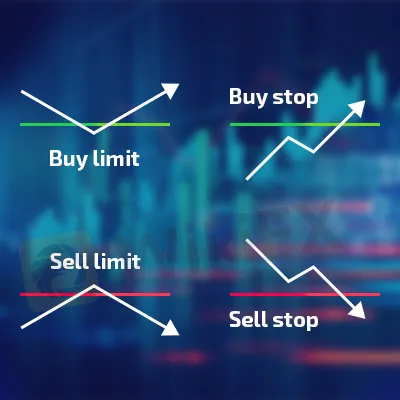简体中文
繁體中文
English
Pусский
日本語
ภาษาไทย
Tiếng Việt
Bahasa Indonesia
Español
हिन्दी
Filippiiniläinen
Français
Deutsch
Português
Türkçe
한국어
العربية
In Forex, what is a Pending Order?
Abstract:When we initially begin trading Forex, we frequently use a "market order" to enter the market. To participate, simply click the button to purchase or sell. The market order informs the broker that you wish to participate at the greatest available price, or the "market price." There's no assurance that you'll obtain the price shown on the chart or in the order window, but because Forex is so liquid, it usually works out.

When we initially begin trading Forex, we frequently use a “market order” to enter the market. To participate, simply click the button to purchase or sell. The market order informs the broker that you wish to participate at the greatest available price, or the “market price.” There's no assurance that you'll obtain the price shown on the chart or in the order window, but because Forex is so liquid, it usually works out.
Pending Orders
Pending orders in Forex, or any other market, are a set of instructions you provide your broker when you want to enter or leave a position. Multiple actions can be performed in the same order on more complicated systems. At its most basic level, you're considering a situation in which you inform the market you want to enter or exit a position at a specified price. Nothing occurs if the market does not reach that price. There are many different sorts of orders, but we'll focus on the most common ones.
Buy Stops
Simply put, a buy stop notifies the broker that you wish to buy a currency pair at a certain price. For example, if you are short the USD/CAD pair at 1.31 but realize you are mistaken if the market reaches the 1.3180 level, you set a buy stop at that level to safeguard your account. This implies you buy back the position as soon as the market reaches 1.3180, closing the trade and living to fight another day.
Sell Stops
Sell stops, on the other hand, are the polar opposite. You want to sell the market once a price is touched, usually to close out a trade. Let's imagine you're long the GBP/USD pair at 1.30 and the price has climbed all the way to the 1.33 level. You want to lock in some profits, so you set a sell stop at 1.3270, just below the current price. If the market returns to the 1.3270 level, you sell your position and flatten out your account, at least for that particular transaction.
Sell Limit
A buy limit order expresses your willingness to purchase a currency pair at a certain price or better. For instance, suppose you wanted to purchase the USD/JPY pair at 111.05, which is now cheaper than the market. As the market falls to the level of 111.05, you are only willing to buy it at that price, or better. It is possible to be filled for a lesser price since it is regarded “better,” although this happens infrequently, and usually only when there is a lot of slippage during the news event. If your target price isn't met, nothing happens. The position will cost you either 111.05 or less.

Disclaimer:
The views in this article only represent the author's personal views, and do not constitute investment advice on this platform. This platform does not guarantee the accuracy, completeness and timeliness of the information in the article, and will not be liable for any loss caused by the use of or reliance on the information in the article.
Read more

Alleged Concerns with TradeEU.global's Trading Practices
An individual trader has come forward with allegations of an unfavourable experience while using the services of the broker TradeEU.global.

Lured by False Promises: Malaysian Driver Lost RM218K to an Investment Scam
A 49-year-old e-hailing driver in Malaysia fell victim to a fraudulent investment scheme, losing RM218,000 in a matter of weeks. The scheme, which falsely promised returns of 3 to 5 per cent within just three days, left the individual financially devastated.

WikiEXPO Dubai 2024 will take place soon!
2 Days Left!

Italian Regulator Warns Against 5 Websites
The Italian regulator, CONSOB has issued a warning against five websites offering unauthorized financial services. This regulatory action aims to protect the public from fraudulent activities.
WikiFX Broker
Latest News
Saxo & Portuguese Bank Partnership
SEC Fines Broker-Dealers $275K for Incomplete SAR Filings
Lured by False Promises: Malaysian Driver Lost RM218K to an Investment Scam
FTX Sets March 2025 Timeline for Creditor Payouts: What It Means for Investors
What is an Economic Calendar? How it works
Italian Regulator Warns Against 5 Websites
Mastercard's 2030 Vision: Biometric-Driven, Tokenized Payments
SFC Freezes $91M in Client Accounts Amid Fraud Probe
Bybit Launches Gold & FX Treasure Hunt with Real Gold Rewards
What Are the Latest Trends and Strategies in Philippine Gold Trading?
Currency Calculator


